On July 24th, 2011, the first-of-its-kind World Heritage research
and training organization based on space technologies ---- the International
Centre on Space Technologies for Natural and Cultural Heritage (HIST) under the
Auspices of the United Nations Educational, Scientific, and Cultural
Organization (UNESCO) was officially inaugurated in a ceremony in Beijing.
Gretchen Kalonji, Assistant Director-General for Natural Sciences at
UNESCO, Ding Zhongli, Chairman of the Governing Board of HIST, CAS Academician
and Vice-President of CAS, and Xu Guanhua, Honorary Director of the Scientific
Committee of HIST, CAS Academician and former Minister of Science and
Technology, attended the inauguration ceremony and gave addresses. More than
100 domestic and international experts and representatives from relevant state
ministries and commissions such as the Ministry of Foreign Affairs, China
National Commission for UNESCO and China National Administration of Cultural
Heritage, and UNESCO Natural Science Sector and World Heritage Centre, the
International Society for Digital Earth, the ICSU-IRDR Program and so on took
part in the inauguration ceremony. Hong Tianhua, Deputy Director and
Secretary-General of HIST, chaired the inauguration ceremony.
After showing videos of “The Space Observation and Understanding of
World Heritage” and “Digital Earth Science Platform”, Guo Huadong, the Director-General
of AIR and Director of HIST, outlined HIST’s objectives and proposed research
activities for the coming years, and gave an overview of how HIST will be
structured and administered.
Mario Hernandez, Senior Program Specialist at UNESCO, gave a speech
on “The application of space technologies to the world heritage” and introduced
UNESCOs "Open Initiative" involving space agencies exploring the use
of space technologies for the monitoring and conservation of heritage. He used
examples from around the world to demonstrate how Earth observation can help in
this endeavor. He also desired to strengthen the cooperation with AIR to
jointly promote the application of space technologies in the conservation of
world heritage.
Gretchen Kalonji gave an address to recognize China and CAS’s
advancements in space technologies and she hoped that HIST would make
contributions to the conservation of natural and cultural heritage through
cooperation.
Xu Guanhua made his speech to point out that HIST would play an
active role to promote the conservation of world heritage sites based on
international scientific resources and the advantages of space technologies. He
also analyzed the necessities to develop space technologies, to preserve world
heritage and the gap between the urgent demands of heritage conservation, space
technology, and service capability, and hoped that HIST would take solid
measures to do well in various jobs strategically and effectively.
Relevant leaders and experts including John Alan Richards of
Australian National University, Qin Yuwen, Deputy Director of the Department of
Information Sciences, National Natural Science Foundation, Sun Xiaoyun,
representative of the Ministry of Science and Technology, Jim Weber, expert
from NASA, Li Guoping, Deputy Director-General from China National Space
Administration, and representatives from the National Commission of China for
UNESCO, the State Administration of Cultural Heritage, the Ministry of Housing
and Urban-Rural Development and so on, gave their addresses and expressed their
congratulations and hopes for HIST at the ceremony.
Ding Zhongli, Xu Guanhua, Gretchen Kalonji, and Guo Huadong jointly
unveiled the nameplate of HIST.
Finally, Ding Zhongli made his speech to recognize the significance
of HIST’s establishment, offering a broad cooperative and information-sharing
space for countries in the Asia-Pacific region and other regions in the world.
He traced the long history of CAS’s successful cooperation with UNESCO with
respect to heritage conservation, expressed that CAS would give full play to
its inter-disciplinary advantages to further promote the development and
application of space based Earth observation technology. He also hoped that
AIR, where HIST is located, would increase its supporting capacity in the
aspects of scientific decision-making, development and social service to make
unique contributions to UNESCO and world heritage conservation.
The premiere of the Atlas of Remote Sensing for World Heritage:
China, compiled with multi-platform, multi-band and multi-mode Earth
observation data, was launched at the ceremony to display the role of the space
technologies in monitoring and preserving world heritage and to publicize the
innovation in world heritage research from a new angle. There were also
addresses given by Li Feng, Deputy Secretary of Science Press, Wang Xinyuan,
Deputy Director of HIST, and Dong Cuiping, representative of heritage sites.
As a category-II center under the auspices of UNESCO, HIST is the
first centre of its kind to apply space technologies to monitoring and
preserving natural and cultural heritage and to conduct research and training.
The establishment of HIST aims at providing technical support to other Member
States of UNESCO in the aspects of monitoring, preserving and managing world
heritage sites based on the advantages of CAS and AIR.
Due to its important role in monitoring and evaluating variation of
large-scale surface elasticity, space-based Earth observing technology has
found a new application in monitoring and preserving world heritage. However,
not all the Member States of UNESCO are capable of interpreting and analyzing
the satellite and airborne remote sensing data to monitor their heritage sites
and thus need space-based Earth observing technologies to increase their
abilities in these areas. Therefore, UNESCO and the European Space Agency
established an “Open Initiative” in 2001 encouraging all space agencies and
related research institutions to use space technologies to support world heritage.
CAS joined this Open Initiative through the Joint Laboratory of Remote Sensing
for Archaeology (JLRSA), based on which CAS and UNESCO made plans for a
category-II center under the auspices of UNESCO to be hosted by CAS, for which
CAS proposed a formal application to UNESCO in May 2007. The proposal was
approved by the 179th Session of the Executive Board in April 2008 and the 35th
General Conference of UNESCO in October 2009, and ratified by the State Council
of China in April 2011. UNESCO Director-General Irina Bokova and CAS President
BAI Chunli signed an agreement on the joint establishment of HIST.
HIST is guided by a Governing Board, which held its first session on
the morning of July 24th, 2011. The meeting was mainly intended to establish
and approve administrative matters and the development objectives, but the
board also explored potential research projects and partnerships, initially
focusing on Asia and Africa, offering technical support and training in
monitoring and preserving natural and cultural heritage in such areas.
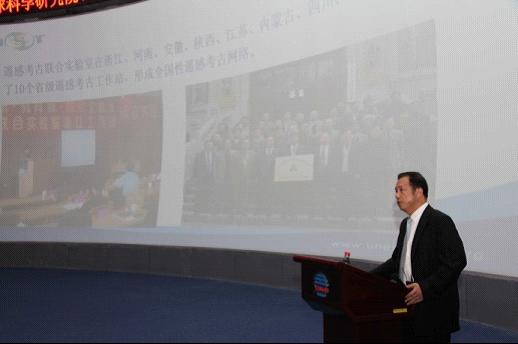
Guo Huadong, Director General of AIR and Director of HIST, addresses the audience at the inaugural ceremony for HIST
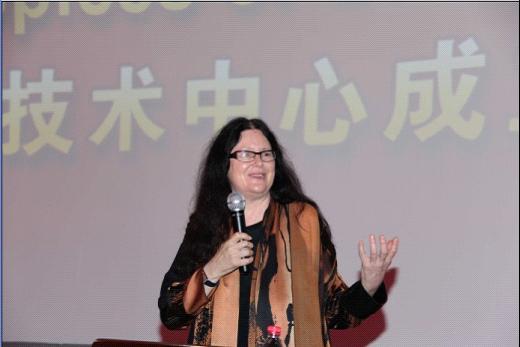
Gretchen Kalonji, Assistant Director-General for Natural Sciences at UNESCO, gives an address for celebrating HIST establishment
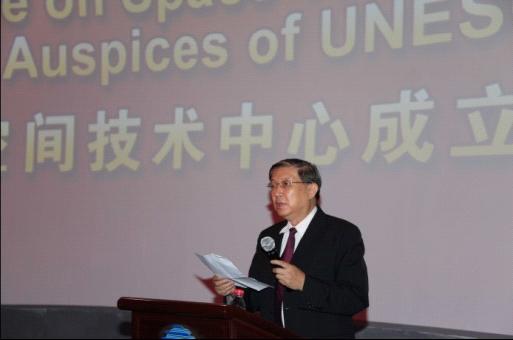
CAS Academician Xu Guanhua, gives an address for celebrating HIST establishment
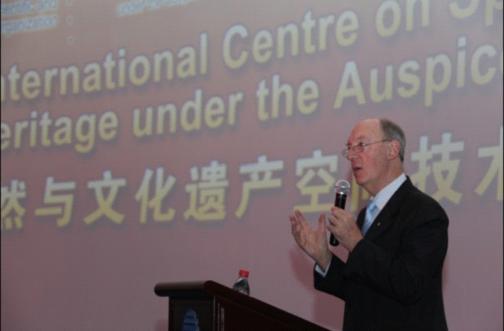
John Richards, Australian National University, gives an address for celebrating HIST establishment
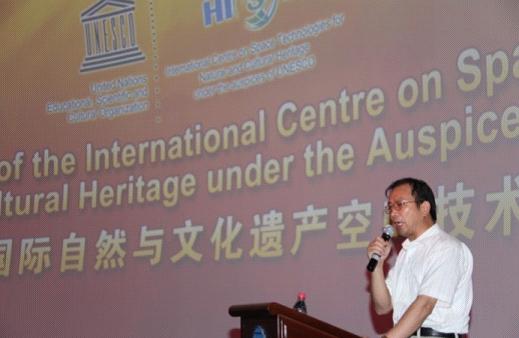
Qin Yuwen, Deputy Director of Department of Information Sciences, National Natural Science Foundation of China, gives an address for celebrating HIST establishment
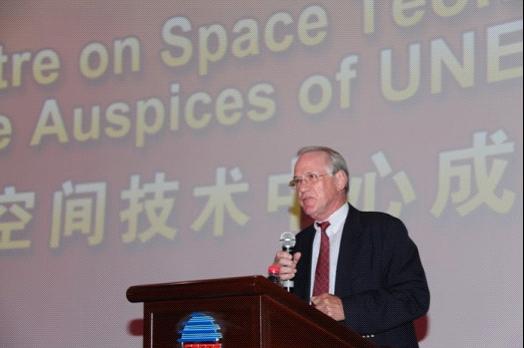
Jim Weber, retired from NASA, gives an address for celebrating HIST establishment
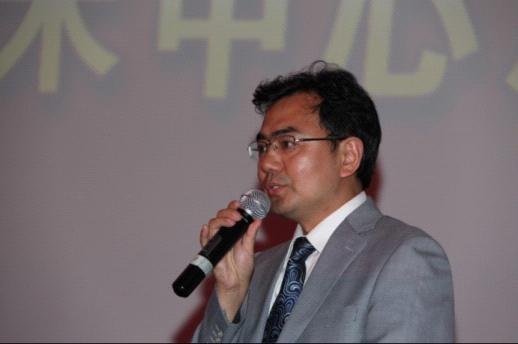
Li Guoping, Vice-Administrator of the China National Space Administration, gives an address for celebrating HIST establishment
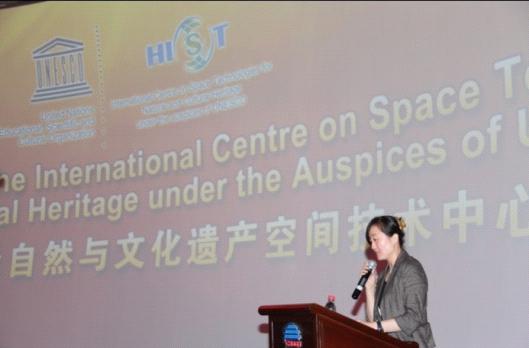
Yu Xiaoping, Commission of The Peoples Republic of China for UNESCO, gives an address for celebrating HIST establishment
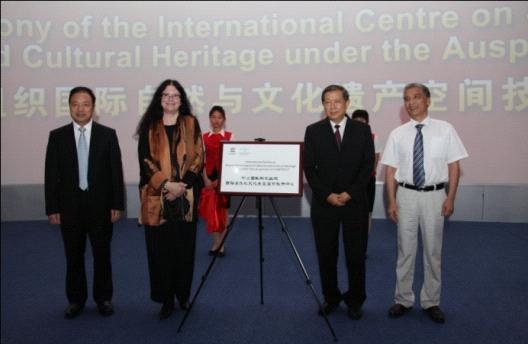
Guo Huadong, Gretchen Kalonji, Xu Guanhua, and Ding Zhongli unveil the HIST nameplate

Wang Xinyuan, Deputy Director of HIST, introduces the Atlas of Remote Sensing for World Heritage: China
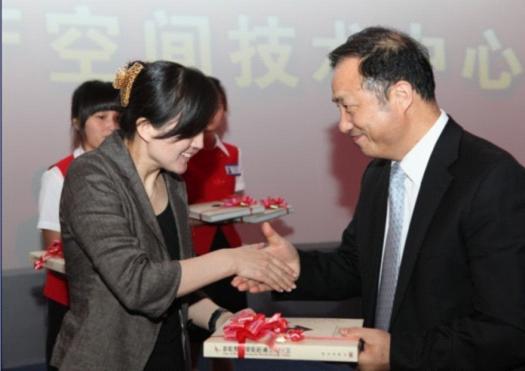
Guo Huadong presented distinguished guests with copies of the Atlas of Remote Sensing for World Heritage: China
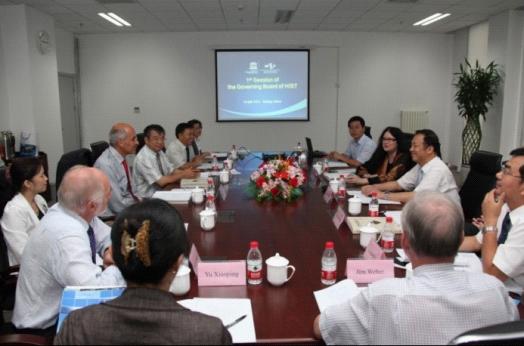
The HIST Governing Board meets for its first session
















